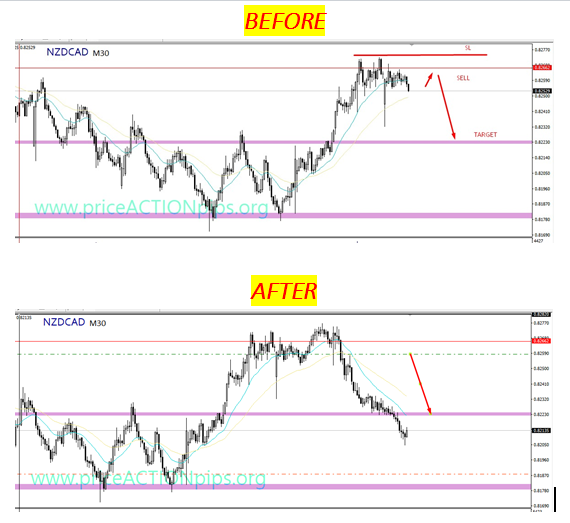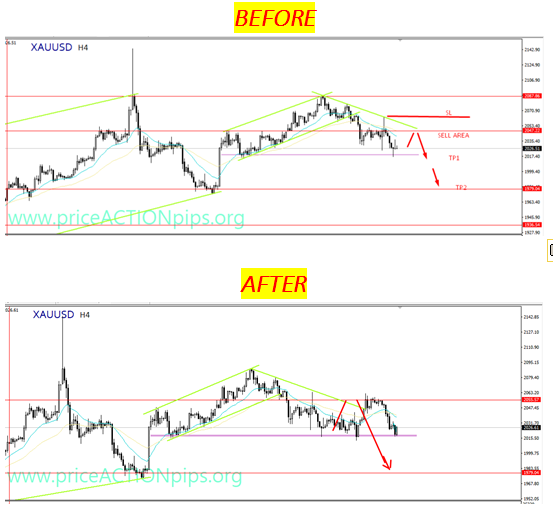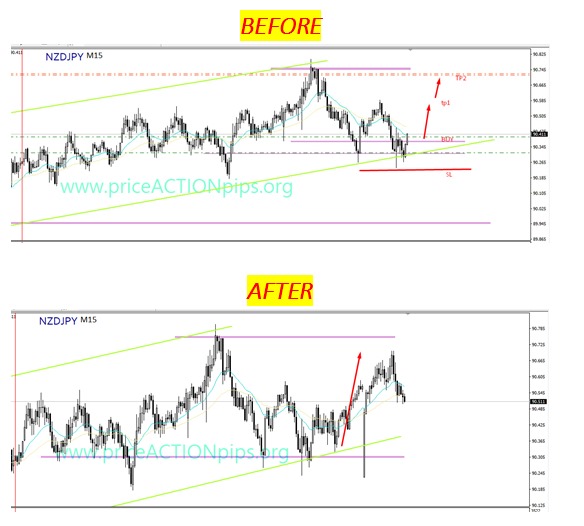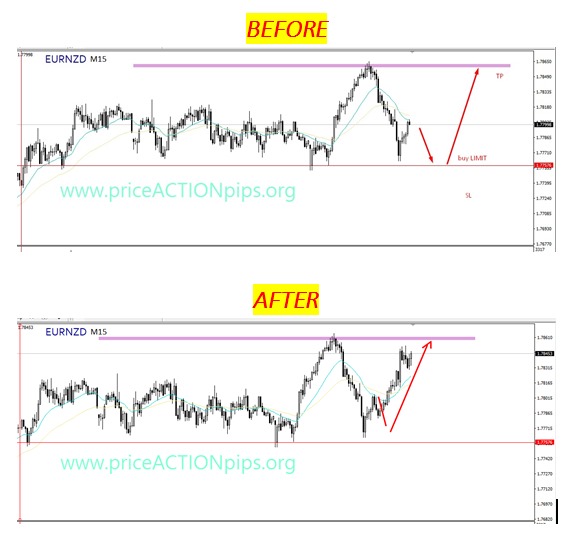FREE FOREX SIGNAL
- Instrument: XTIUSD (Assuming this is related to Crude Oil, WTI)
- Trade Type: Sell (Bearish)
- Sell Area: Identified as the selling area ranging from 73.00 to 74.00, signaling a strategic entry point in line with the anticipated bearish trend.
Profit Targets:
- Target 1 (TP1): The initial profit target is set at 69.000, indicating a level where profits may be secured.
- Target 2 (TP2): If corrected, a more plausible second target might be set at 67.00, suggesting the potential for an extended bearish move.
Stop Loss:
To manage potential losses, a stop loss is placed at 77.000, defining the level at which the trade should be exited to limit potential downside risk.
This analysis suggests that, based on the bearish outlook, initiating a sell position within the specified range of 73.00 to 74.00 in the XTIUSD (Crude Oil, WTI) pair could be strategically advantageous. The profit targets at 69.000 and a potentially corrected level at 67.00 provide exit points for securing profits, while the stop loss at 77.000 is a risk management measure.
Always ensure to double-check your trade parameters and adapt your strategy according to your risk tolerance and market conditions. Trading involves risks, and thorough analysis and risk management are essential components of a successful trading approach.
- Market Fundamentals: Stay informed about fundamental factors that could impact the price of Crude Oil (WTI). This includes geopolitical events, global demand-supply dynamics, and economic indicators affecting the energy markets.
- OPEC Meetings: Keep an eye on OPEC (Organization of the Petroleum Exporting Countries) meetings and announcements, as decisions made by major oil-producing nations can significantly influence oil prices.
- Energy Reports: Monitor regular energy reports such as the EIA (Energy Information Administration) weekly petroleum status report and other relevant publications, as they provide insights into oil inventories and production levels.
- Global Economic Conditions: Consider broader economic conditions, as they can impact energy demand. Economic indicators like GDP growth, industrial production, and manufacturing data can provide context for potential movements in oil prices.
- Technical Confirmation: Use technical indicators or chart patterns to confirm the bearish signal. This could include trendline analysis, moving averages, or other relevant technical tools.
- Risk Management Adjustments: Regularly reassess your risk management strategy, considering any changes in market conditions or unexpected events. Be prepared to adjust your stop loss or take profit levels accordingly.
- News and Events: Stay vigilant regarding any unexpected news or events that may affect the energy markets. Sudden developments, such as geopolitical tensions or major economic shifts, can impact commodity prices.
Remember, trading involves inherent risks, and it’s crucial to stay informed, adapt your strategy as needed, and exercise prudent risk management. Additionally, consider seeking advice from financial professionals for a well-rounded approach to your trading decisions.
Join us for Free Forex Signals. We are the Best Forex Signals provider. Elevate your trading journey with expert insights at no cost. Our expert guidance ensures success.



















